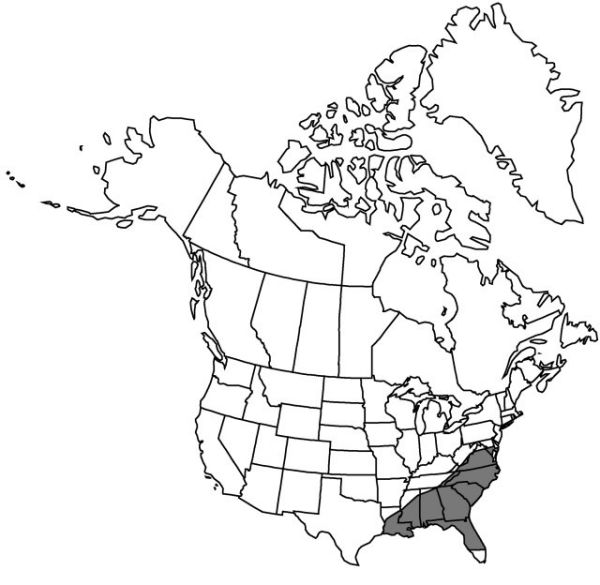Yucca filamentosa
Sp. Pl. 1: 319. 1753.
Plants acaulescent or rarely caulescent, indistinctly arborescent, 1–4.6 m; rosettes usually small. Stems simple, 0–0.5 m. Leaf blade occasionally erect, proximal leaves often becoming reflexed near middle, lanceolate, flattened, abruptly narrowed and furrowed to apex, thin, widest near middle, 50–75 × 2–4 cm, usually soft and limp, scabrous, margins entire, long and curling, filiferous. Inflorescences paniculate, arising beyond rosettes, ovoid, 7.5–15 dm, glabrous; bracts erect; peduncle scapelike, 1–3 m, less than 2.5 cm diam. Flowers pendent; perianth globose; tepals distinct, nearly white, ovate, 5–7 × 2–3 cm, glabrous, apex short-acuminate; filaments shorter than pistil; pistil 1.5–3.8 cm; stigmas lobed. Fruits erect, capsular, dehiscent, oblong, 3.8–5 × 2 cm, dehiscence septicidal. Seeds dull black, thin, 6 mm diam.
Phenology: Flowering mid spring–early summer.
Habitat: Sandy soil
Distribution

Ala., Fla., Ga., La., Md., Miss., N.C., S.C., Tenn., Va., W.Va.
Discussion
Yucca filamentosa is often cultivated and has become naturalized in some areas beyond its native range. Varieties that have been described are rarely recognized in recent literature. Yucca filamentosa and Y. flaccida are very closely related and perhaps are not distinct species.
Selected References
None.